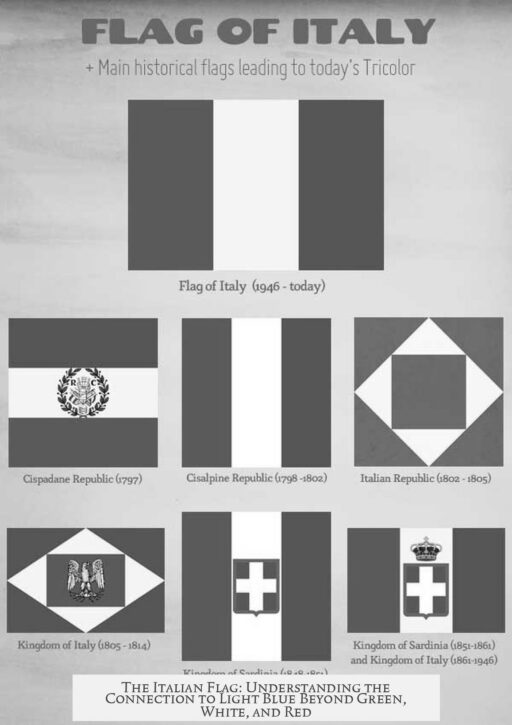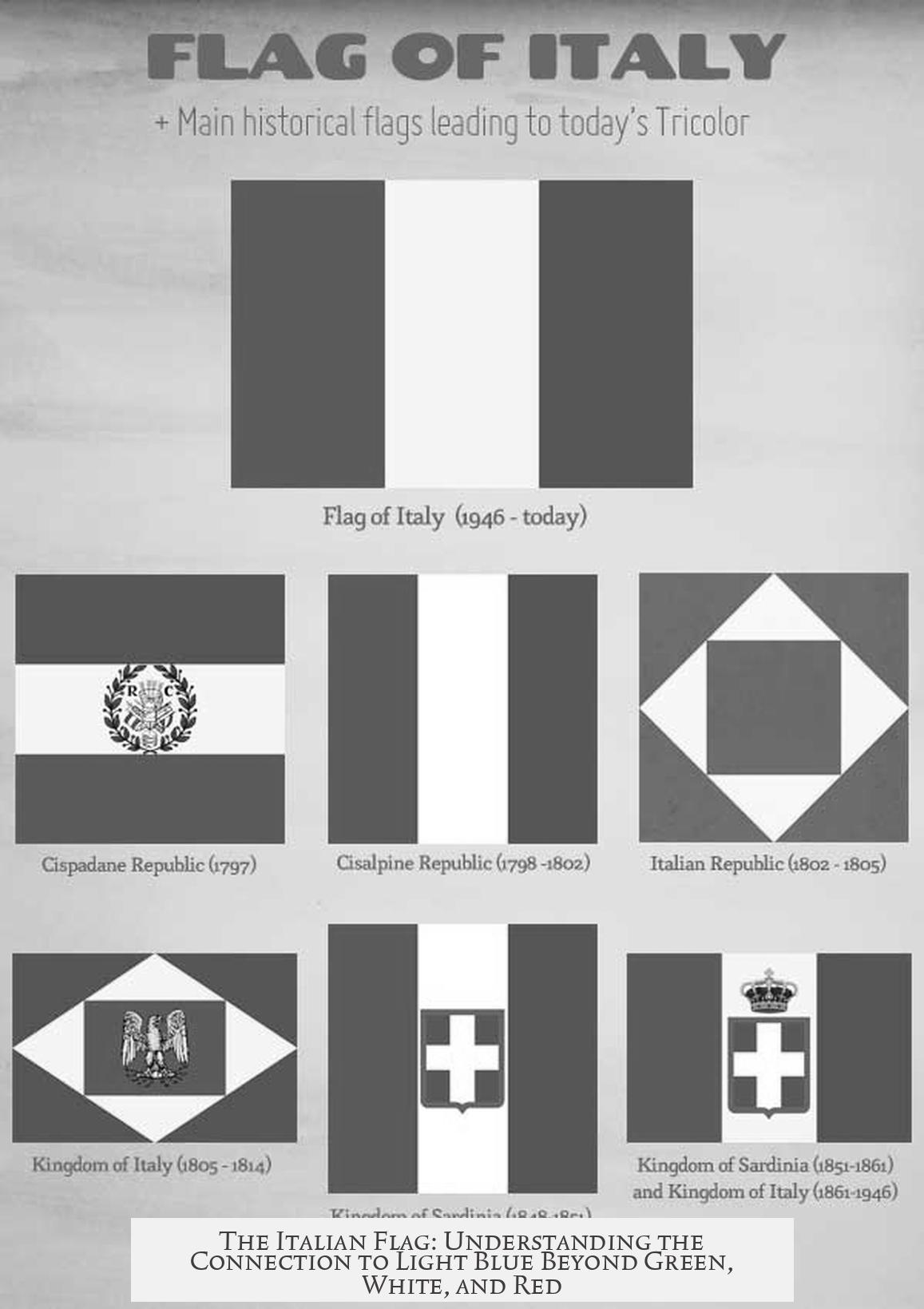Italy became associated with the color light blue due to the historical link with the House of Savoy, rather than from the Italian flag, which is green, white, and red. The use of light blue, often called Savoy blue or Savoy azure, began in 1366 when Amadeus VI, Count of Savoy, raised a blue flag to honor the Madonna during a crusade. This event marked the start of blue as a symbolic color for the House of Savoy.
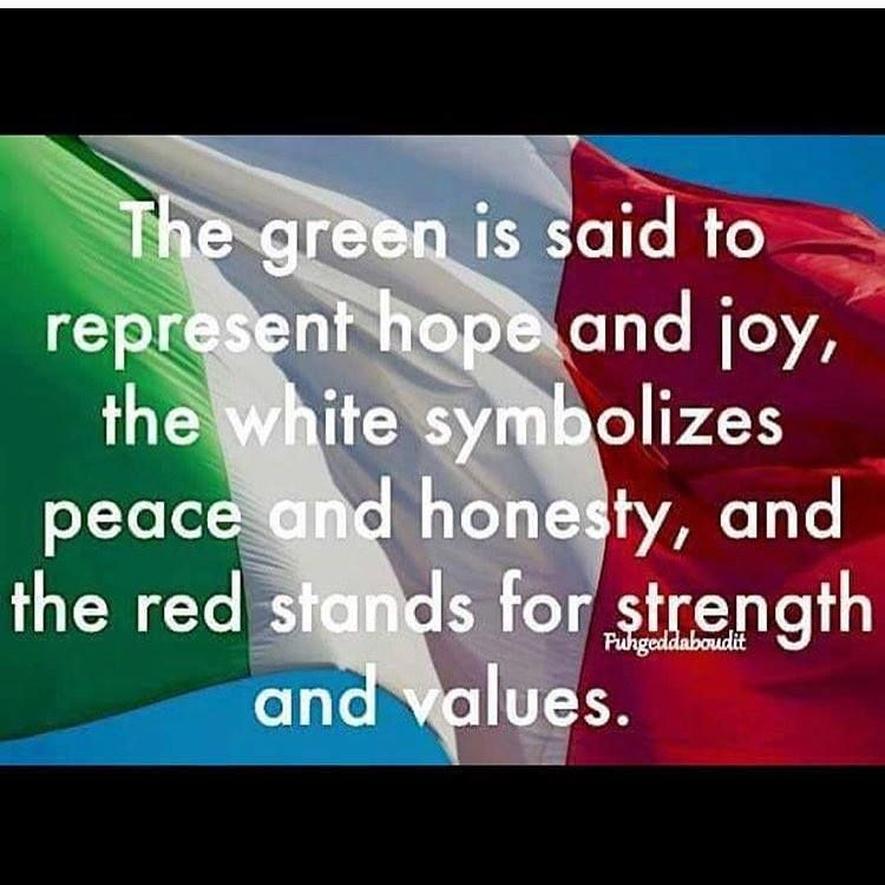
After Italy’s unification in the 19th century, the light blue color of the House of Savoy transformed into a symbol of Italian national identity. Although it does not appear on the official Italian flag, this light blue continued to represent the country in various ways. Many national symbols incorporated it, especially in fields like sports.
The Italian national football team, for example, is widely known as “Gli Azzurri,” meaning “The Blues,” due to their light blue jerseys. This tradition honors the legacy of the Savoy dynasty and reflects the color’s importance beyond the flag’s tricolor scheme. The light blue color is also present in other institutions and ceremonial contexts linked to Italy’s history and unity.
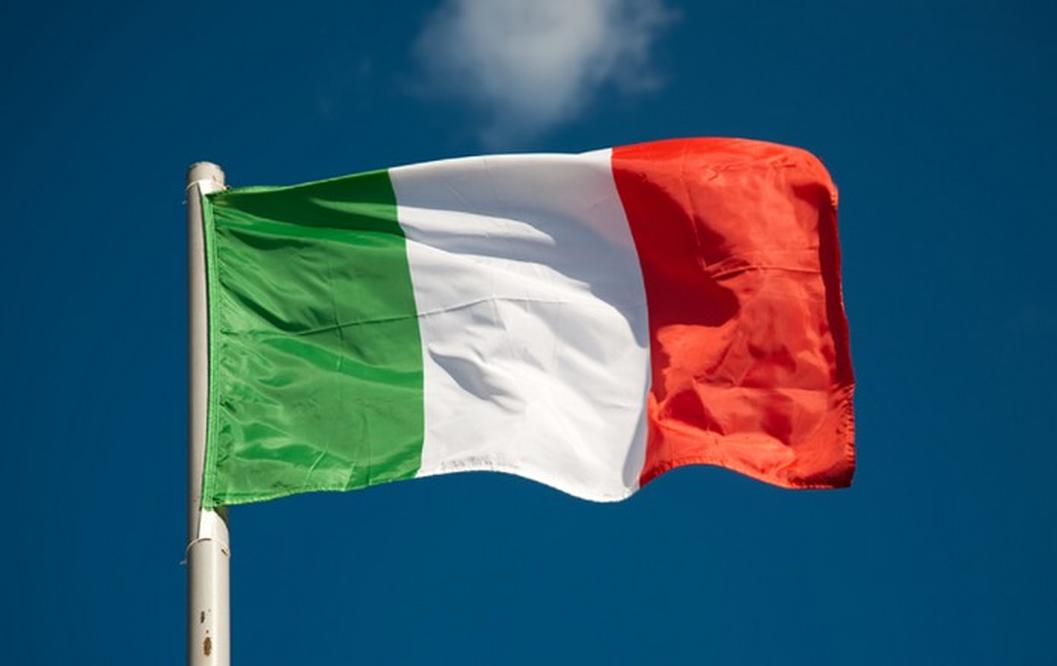
| Aspect | Details |
|---|---|
| Origin of Light Blue | 1366, Amadeus VI of Savoy raised a blue flag representing the Madonna. |
| Symbolic Importance | Used by House of Savoy and adopted by united Italy as a national symbol. |
| Use in Sports | Italian national teams wear light blue, reflecting this historic color. |
The association of Italy with light blue is a historic tradition linked to monarchy and national unity rather than the official tricolor flag. It plays a cultural and symbolic role in modern Italy, especially visible in Italian sports and official emblems.
- The color light blue originates from the House of Savoy, dating back to 1366.
- It became a symbol of Italy after unification, representing national identity.
- Light blue is widely used by Italian sports teams, notably the football team.
The Italian Flag is Green, White, and Red—So Why Is Italy Associated with Light Blue?
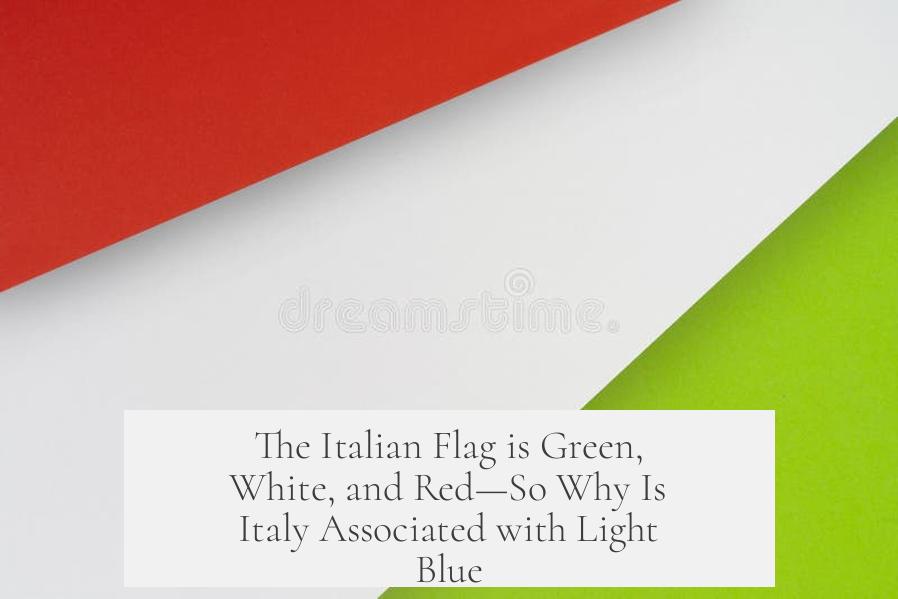
At first glance, it seems confusing. The Italian flag proudly waves in green, white, and red—three colors steeped in history and symbolism. But when and how did Italy become linked to light blue? The answer lies deep in the folds of Italian history, tied to nobility, faith, and national pride.
Before the green, white, and red were firmly established as Italy’s official flag colors, Italians embraced another prominent hue: a serene shade of blue known as Savoy blue, or “azzurro.” This light blue shade didn’t appear randomly; it was born from centuries-old traditions connected to the House of Savoy, Italy’s royal family that played a pivotal role in unifying the fragmented peninsula.
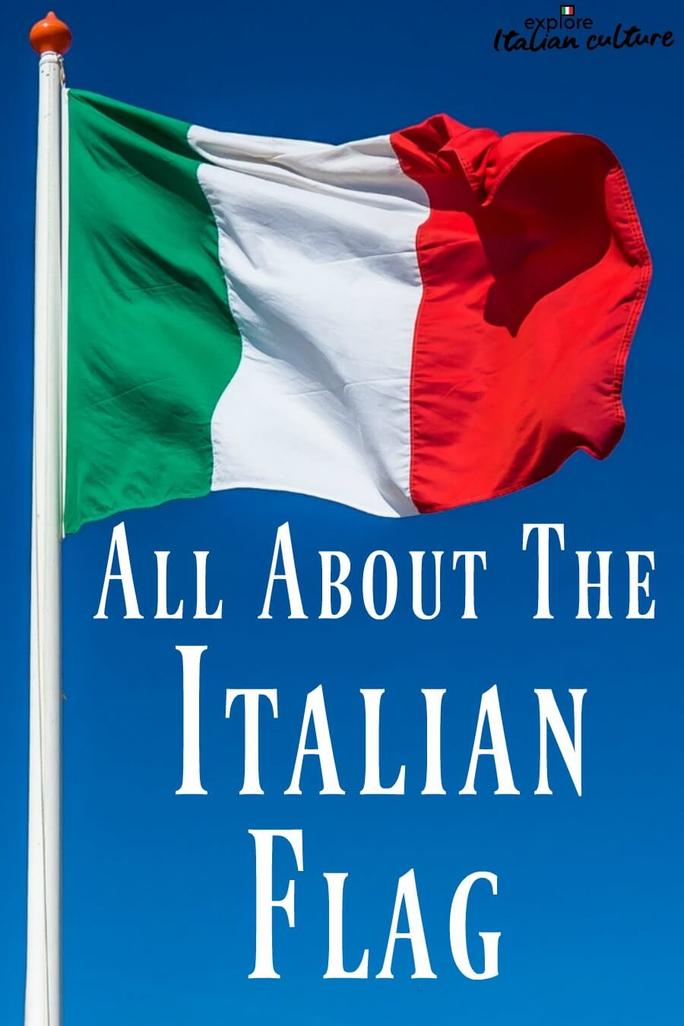
The Birth of Savoy Blue—From Crusades to Identity
How did this beautiful azure become Italy’s signature “secret” color? The story trails back to 1366 when Amadeus VI, the Count of Savoy, embarked on a crusade. To honor the Madonna, a revered figure symbolizing protection and guidance, he flew a blue banner. This wasn’t just a decorative choice; it was a powerful emblem blending religious devotion with royal heritage.

This “Madonna blue” or Savoy blue became the count’s family symbol and soon transcended into a national emblem over time. The House of Savoy adopted it consistently, and as their influence spread, so did this vibrant light blue.
Light Blue and Italy’s Unification—A Symbol Springs to Life
Fast forward to the 19th century. Italy wasn’t yet Italy as we know it today—it was many states fragmented under varying crowns and allegiances. The Risorgimento, Italy’s movement for unification, came to the fore, sparking fierce battles and political maneuverings.
The House of Savoy stood at the center of this movement. As the kings of Sardinia and later kings of Italy, their emblematic blue joined revolutionary fervor and national pride. The light blue evolved from a mere banner color into a broader symbol representing the newly united Italy.
Though Italy’s official flag became the iconic tricolor—green, white, and red—the Savoy blue stayed close at heart. Think of it as Italy’s “spirit color,” quietly waving alongside the official flag.
Why Doesn’t the Italian Flag Feature Light Blue?
Good question! Flags often carry many layers of symbolism. Italy’s tricolor reflects agricultural fertility (green), peace (white), and blood of patriots (red). These are powerful, visible markers of Italian culture and history.
But the light blue runs deeper, more intangible. It’s the royal family’s color and the tint found stitched on Italy’s military uniforms and official crests for decades.
Even today, the light blue color shines in unmistakable ways. Italian national sports teams—football, volleyball, rugby—all don light blue jerseys. The symbolic “Azzurri” nickname for the football team literally means “The Blues,” and fans passionately rally behind that color during international tournaments.
Light Blue’s Role Today—More Than Just a Color
Have you ever caught yourself cheering for “Gli Azzurri” during the FIFA World Cup? That’s the color’s power in modern times: uniting Italians with a simple brushstroke of azure. It signifies excellence, unity, and the pride of representing Italy on the world stage.
Beyond sports, light blue appears in other national elements such as military medals, presidential standards, and some official emblems. Eventually, it became a soft backdrop against which Italy’s rich cultural tapestry is displayed.
Lessons from History: The Soft Power of a Color
The story of Italy and the color light blue reminds us that national identity is complex. Sometimes, it’s not just the official flag that tells the tale, but secondary colors that capture emotions, traditions, and unbreakable bonds.
In Italy’s case, light blue is that whisper of history—connecting medieval crusaders, royal families, and modern sports heroes. It’s a reminder of continuity, even when the political landscape changes.
For brands, designers, or fans curious about Italian culture, this insight is useful. When trying to evoke “Italianness,” the tricolor is the obvious choice. But adding touches of Savoy blue or light blue can strike a deeper chord—a subtle nod to Italy’s soul beyond the flag.
Final Thoughts: More Than Just Green, White, and Red
The Italian flag waves green, white, and red, telling one part of Italy’s story. The light blue associated with Italy whispers another—one of devotion, royalty, and unity through the House of Savoy that helped forge the nation.
Remember Amadeus VI’s blue flag fluttering on a crusade, or Italy’s athletes proudly wearing the “azzurro” on their chests. That light blue hue is Italy’s intangible thread weaving past and present.
Next time you watch an Italian team play or see a historical reference in that bright, calm color—think about how light blue silently carries centuries of pride and identity. Colors aren’t just visuals. They’re stories waiting to be uncovered.
“The color savoy blue is more than a royal hue; it is a cultural emblem embedded in Italy’s history, unification, and contemporary pride.” — Alessandro Martinelli
Why is Italy associated with the color light blue when its flag is green, white, and red?
The association with light blue comes from the House of Savoy’s color, known as Savoy blue. This shade became a national symbol after Italy’s unification, despite the flag’s green, white, and red colors.
When did the color light blue first become linked to Italy?
The link dates back to 1366. Amadeus VI, Count of Savoy, used a blue flag honoring the Madonna during a crusade, starting the tradition of this color representing Italian identity.
How is the light blue color used in modern Italy?
Light blue appears in various national symbols and is famously worn by Italian sports teams. It remains a strong symbol of Italian pride alongside the national flag.
What is the origin of the term “Savoy blue”?
“Savoy blue” refers to the shade of blue used by the House of Savoy. This family ruled parts of Italy and influenced national symbols, linking this color to Italian heritage.
Did the color light blue replace any colors on the Italian flag?
No. The Italian flag remains green, white, and red. Light blue is a separate symbol associated with Italy through its royal history and sports culture, not the flag’s design.
